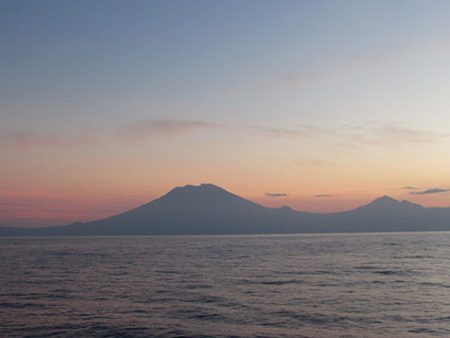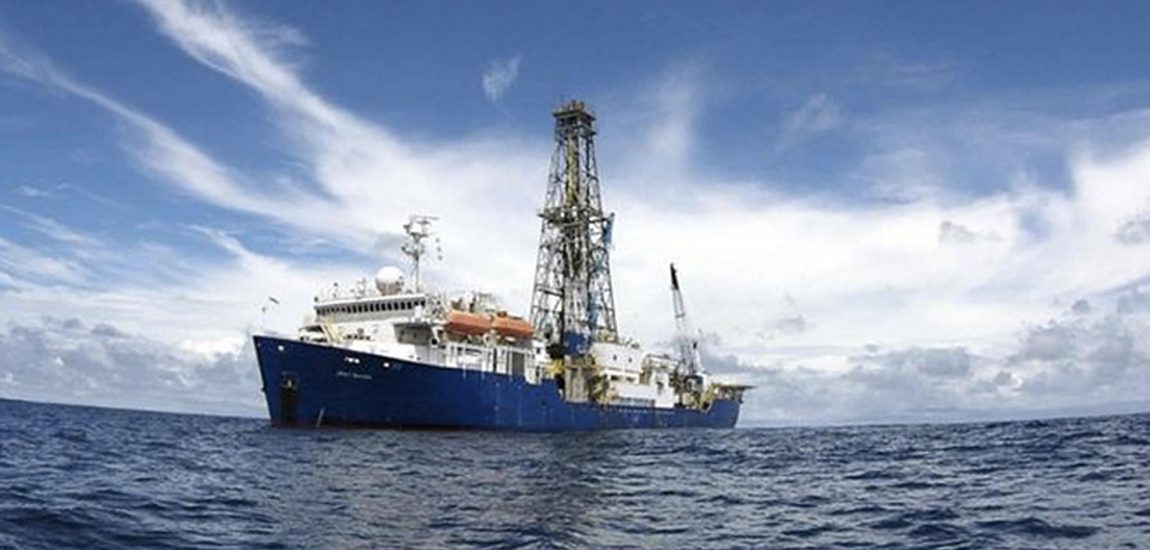
Science at Sea
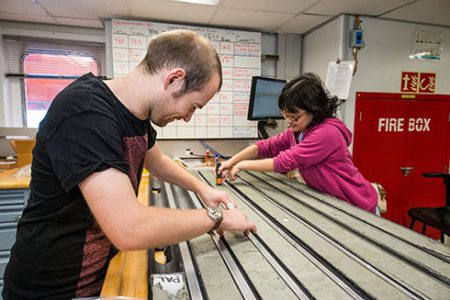
Being on a ship for two months has its ups and downs. But when you’re drilling and recovering sediments that haven’t seen daylight for millions of years, you can bet both the ups and the downs are thrilling.
My research involves the study of modern diagenetic (“rock-forming”) processes in order to better understand how to interpret evidence of these processes in the geologic record. In particular, I’m interested in placing better constraints on the cycling of sulfur in deep ocean sediments. Such cycling involves processes like the reduction of sulfate (SO42-) to sulfide (H2S), the oxidation of sulfide back to sulfate, and the formation of solid phase sulfides like pyrite (FeS2).
Knowledge of how the redox cycling of sulfur proceeds in modern sediments is used widely in making models of the oxygenation state of Earth’s oceans. However, most of this knowledge has come from the shallow continental shelf – i.e., the small fraction of the seafloor easily accessible via wading on foot or with small boats. So, I’m working to learn how deep ocean sediments factor into the modern sulfur cycle and how their role may have changed through geologic time. Much of this work involves measuring the abundance of different sulfur isotopes in various dissolved and solid phases within sediments, as processes within the sulfur cycle tend to “fractionate” these isotopes such that the products formed from these processes differ in their isotopic composition from the reactants used to make them.
As part of my research, I’m currently sailing on one of the world’s only drill ships devoted exclusively to marine scientific research, the JOIDES Resolution, as part of International Ocean Discovery Program (IODP) Expedition 363. We’re drilling sediments from a variety of deep ocean sites amongst the islands of Southeast Asia to understand the regional responses of the Western Pacific Warm Pool (WPWP), the world’s largest reservoir of warm surface water, to local and global changes in climate over the past 15 million years. Fortunately for me, the sites are also well suited to study the sulfur cycling in deep ocean sites with a wide range of sedimentation rates, organic matter contents, and input of terrestrial material.
Accomplishing the research goals of the 30+ scientists on the ship requires an incredible feat of modern engineering: the ability to drill and retrieve cores of sediment from up to two thousand meters below the seafloor in water that is hundreds to thousands of meters deep. To do this, sections of pipe are connected together and extended beneath the ship until the seafloor is reached. A drill with a hole in the middle for collecting a sediment core can be dropped through the pipe to commence the retrieval of the sediments. As you might imagine, floating away from a site while being attached to it with an extremely long and rigid pipe would be disastrous, so our ship is equipped with a special “dynamic positioning” system that can maintain our position within a range of a few tens of meters over long periods of time.
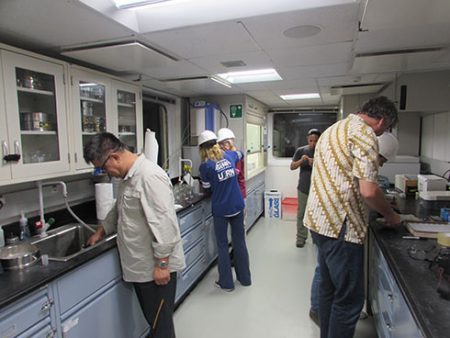
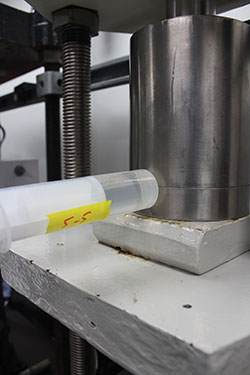
My job as an inorganic geochemist on the ship is to help extract pore waters from slices of the sediment cores brought up to the surface and to measure the concentrations of various dissolved constituents within those waters. We have a surprisingly well-equipped chemistry lab on board the ship that allows us to measure the concentrations of major cations and anions like sulfate, calcium, magnesium, and potassium, as well as minor constituents like ammonium, iron, and silica. These concentrations can tell us a lot about the rate of organic matter degradation and any mineral precipitation or dissolution reactions that are occurring in the sediments. We are also collecting and preserving water for measurements that cannot occur on the ship due to a lack of instrumentation (e.g., measurements that require mass spectrometers).
Life at sea is quite different from life at home, but not unpleasant by any means. The 125 people on board are generally divided into two 12-hour shifts to allow the ship to operate 24 hours a day, seven days a week. Each person shares a room with someone who is working on the opposite shift so that everyone can sleep as undisturbed as possible. Four meals are served a day, and we even have creature comforts like a gym, a movie room, and a TV lounge with satellite phone and Internet. But the biggest challenge so far has been staying away from the dessert cooler and the soft-serve ice cream machine. They’re dangerous!
We’re currently about halfway through our nine week expedition and are slowly moving north from Papua New Guinea towards a deep ocean high in bathymetry called the Eurapik Rise. We’ll drill a few sites on our way there before ending in Guam in early December. What sorts of exciting surprises will we find in the sediments we recover? Only time will tell.
Dan Johnson is a Ph.D. student in Geochemistry at the California Institute of Technology in Pasadena, CA. You can find more details about his shipboard experience at his blog, danontheboat.blogspot.com, and about IODP Expedition 363 at iodp.tamu.edu.
See original post here: http://ontherocks.ie/2016/11/20/science-at-sea/
On the Rocks blog: http://ontherocks.ie/
